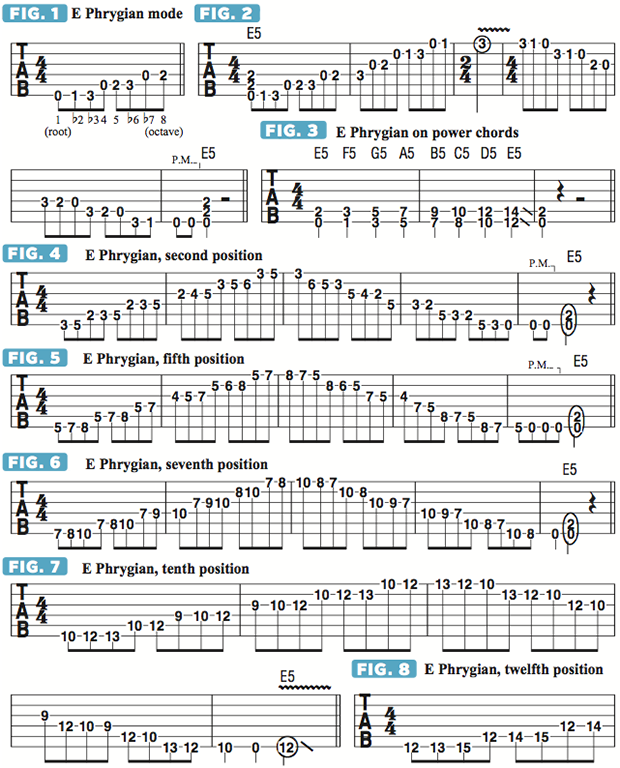How to Use the Dark Sound of the Phrygian Mode’s “Flatted” Intervals
Examine how the Phrygian Mode can be utilized for heavy-metal riffs and solos.
In this month’s column, I’d like to continue our investigation of the fundamental modes with a look at the Phrygian mode.
The Phrygian mode is often referred to as the “third mode” because—starting from the major scale, which is the “mother,” or “parent,” scale to the seven fundamental modes and is itself considered the first mode—Phrygian is the third mode in the series, as it is based upon the third scale degree of the major scale.
If we start with a major scale in the key of C, the notes are C D E F G A B. Intervallically, this is spelled: one (root), maj2 (major second), maj3 (major third), 4 (perfect fourth), 5 (perfect fifth), maj6 (major sixth), maj7 (major seventh). If we start from the third note of C major, E, and proceed through the same note series to an E note one octave higher, we get E F G A B C D.
This is the E Phrygian mode, spelled: one (root), b2 (minor, or “flatted,” second), b3 (flatted third), 4, 5, b6 (flatted sixth), b7 (flatted seventh). As you can see, four of the seven scale degrees—b2, b3, b6 and b7—are flatted intervals. These yield a dark, foreboding sound that is perfect for heavy-metal riffs and solos.
FIGURES 1 and 2 illustrate the E Phrygian mode played in first position, utilizing open strings. Be sure to play this pattern many times in order to memorize it and ingrain it into your fret-hand muscle memory. Also, recite the note names and intervals as you play them, as this will further develop your understanding of the notes of this mode. A great way to understand how a scale and a chord progression work together is to create a series of chords from that specific scale. This way, you can solo all day over this progression using the scale upon which the chord progression is based.
FIGURE 3 depicts a series of root-fifth power chords built from each note of the E Phrygian mode, resulting in the sequence E5 F5 G5 A5 B5 C5 D5. Now that you have a handle on the intervallic structure of E Phrygian and its associated chord sequence, let’s move through all of its available fretboard scale positions.
FIGURE 4 shows E Phrygian played in second/third position. In bar 1, the index finger is used for all notes at the second fret. In bar 2, the index finger shifts up one fret, to third position.
All the latest guitar news, interviews, lessons, reviews, deals and more, direct to your inbox!
Now proceed through FIGURES 5–8, which present E Phrygian scale positions played progressively higher up the fretboard. As usual, play through these patterns slowly enough so that you will memorize them while building them into your muscle memory, then try playing them faster. Next time, we’ll look at the Phrygian mode’s “cousin” scale, Phrygian-dominant.


